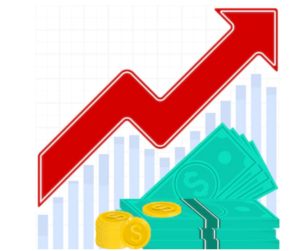Difference Between Opportunity Cost And Economic Cost: Cost analysis focuses on examining how costs behave in relation to various production characteristics, such as the size of the output, the scale of activities, and the pricing of the inputs and outputs. Everything revolves on the business side of production. In order to fully comprehend the cost function, we will examine the key distinctions between opportunity cost and economic cost, two of the key cost ideas.

Recommended: How To Attract Beautiful Women: 8 Tips
What is Opportunity Cost?
The value or advantage forfeited by engaging in a certain activity in comparison to engaging in a different activity is known as the opportunity cost in microeconomic theory. Simply put, it indicates that by choosing one course of action (such making an investment), you are forgoing the chance to choose an other course of action. The best activity is the one that, after deducting opportunity costs, has the highest return when compared to all other activities.

For instance, if you purchase a car and use it just for personal transportation, you are not permitted to rent it out; yet, if you do, you are not permitted to use it for personal transportation. The best option is to drive yourself if the expense of getting about without a car is more than the benefit of automobile rental. Opportunity cost may be expressed in the simplest way possible as follows: “Opportunity Cost = returns on best Forgone Option – returns on Chosen Option.
The decision-maker forgoes the option of the next best choice while making a sacrifice, according to a specific measurement of opportunity cost. To ignore the comparable value of the best alternative choice in order to benefit from the usefulness of the best perceived option, in other words. If there are choices to be made that don’t involve giving something up, those choices have no opportunity cost and no cost. Through the study of opportunity cost, a business may make a decision where the real advantages outweigh the potential cost, allowing for the most efficient use of its limited resources.

Recommended: Major Tools for Economic analysis
Types of Opportunity Cost
1. Explicit Cost: Explicit costs are the direct expenses incurred as a result of an activity that was carried out either through a monetary transaction or a direct transfer of resources. In other words, clearly visible out-of-pocket expenses are what is meant by “explicit opportunity costs” for a business. This implies that explicit expenses, such as paying personnel, will always be expressed in terms of dollars and require a financial transaction. Having said that, it is simple to locate these specific charges in the expenses section of the income statement and balance sheet of a company to reflect all of its cash outflows.
Here are several examples:
Costs of infrastructure and land
Operating and upkeep expenses: salaries, rent, overhead, and supplies.
Also see: Advantages and Disadvantages of the Internet
2. Implicit Costs: Implicit costs are the opportunity costs of using a company’s resources that may be employed for other reasons. They are also known as implied, imputed, or notional costs. These expenses are frequently unstated and difficult to see. Implicit opportunity costs relate to intangibles, in contrast to explicit costs.
They cannot thus be precisely recognized, characterized, or reported. This indicates that there are costs associated with projects that have already happened without the exchange of money. In order to increase the profitability of their company, a small business owner could choose to forego paying themselves a salary at first.
Implicit costs are associated with assets, thus since they don’t result in any monetary benefits or losses, they are also not recognized for accounting purposes. Implicit opportunity costs in production variables permit depreciation of products, materials, and machinery that support a business’s activities.
Examples of implicit production costs include the resources that a firm owner contributes, such as
a. Infrastructure
b. Workforce
c. Time
Sunk Cost vs. Opportunity Cost
Opportunity costs and sunk costs are vastly different from one another. While an opportunity cost is a potential return that has not yet been realized, a sunk cost is a cost that has already been incurred. A sunk cost therefore looks backwards, but an opportunity cost looks forward. An illustration of a buried cost would be a company spending $50,000 on a piece of specialized machinery. The opportunity cost, conversely, is a breakdown of different ways that $50,000 may have been put to use.
Recommended: Oldest Museums In The World (With Pictures)
What is Economic Cost?
Economic cost is the sum of all losses involving items that have been valued by a single person. Economic cost is primarily used by economists as a tool to assess the wisdom of one course of action vs another. The comparison takes into account both the profits and costs a course of action would have avoided, as well as those of the actual course of action. Accounting cost is different from economic cost since opportunity cost is included.

Recommended: Differences Between a Nation And a Country
Types of Economic Cost
1. Variable Costs: The expenses incurred for the variable input are known as the variable cost. Workforce, money, resources, energy, land, and structures are all examples of inputs. The utilization of variable inputs varies with output. Labor is typically considered to be the variable input. Variable costs and total variable cost (TVC) are the same thing.
2. Total fixed costs: The expenses associated with fixed assets that don’t change with output are known as fixed costs (TFC).
3. Average Cost: Average cost (AC) is the sum of all costs divided by production. AC = TFC / q + TVC / q.
a. Average fixed cost (AFC) equals total fixed cost split by output, i.e. AFC= TFC/q. As output goes up, the average fixed cost function keeps going down.
b. Average variable cost (A.V.C.) is equal to output divided by variable costs. TVC/q + AVC. The normal form of the average variable cost curve is a U. It is similar in form to the average cost curve and is located below it; the average fixed costs are equal to the vertical distance between the average cost curve and average variable cost curve.
4. Marginal Cost: The cost that is incurred in addition as a result of increasing production by one unit is known as the marginal cost (MC). It is the supplementary expense for every additional unit of output.
Also see: Meaning And Features Of Joint Tenancy
Differences Between Opportunity Cost and Economic Cost
1. Definition: Opportunity Cost is the possible gain that a person or an organization forgoes by selecting one option over another. Economic cost examines the total gains or losses associated with selecting one option over another in terms of resources, time, and expense.
2. Scope: Given that it is a component of the broader Economic Cost, Opportunity Cost has a more limited reach. Economic Cost encompasses Opportunity Cost, giving it a larger reach.
3. Accounting Cost: Opportunity cost does not include the accounting costs associated with selecting a certain alternative.
The economic cost includes the accounting cost of rejecting a certain alternative.
Also see: Hardest Courses To Study In The World 2022
4. Example: The money someone could have made by engaging in another economic activity instead of creating a school would be the opportunity cost. The opportunity cost (the income they could have made by engaging in another economic activity) and the overall accounting cost (the explicit cost of constructing a well) for a group of individuals establishing a school would be the economic cost.
Also see: How To Attract Beautiful Women
Conclusion
Economic cost and opportunity cost differ significantly from one another. However, these are crucial components of the whole cost-benefit analysis that every person or organization performs before engaging in any economic action.

Edeh Samuel Chukwuemeka, ACMC, is a lawyer and a certified mediator/conciliator in Nigeria. He is also a developer with knowledge in various programming languages. Samuel is determined to leverage his skills in technology, SEO, and legal practice to revolutionize the legal profession worldwide by creating web and mobile applications that simplify legal research. Sam is also passionate about educating and providing valuable information to people.